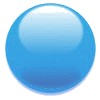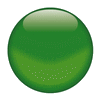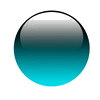|
Photo
Découvrez
une sélection des meilleurs sites sur la photographie

*
Fan de photo
- Lien : www.fandephoto.net
(forum - articles - vos photos - concours)
Pour
les amateurs de photographie et d'observation de la nature
* Photo
- Link : www.photo.net
A
community of Photographers
* Zone
numérique - Lien : www.zone-numerique.com
(actualité, dossiers, tests, tutoriaux)
Portail d'information et de test sur
les technologies numériques
|
Banque
de photos / Photo bank
* Photo
libre
- Lien : www.photo-libre.fr
Photos libres de droits
Blogs
* Only photo
- Lien : www.onlyphotos.org
Le blog d'un photographe de rue
Développement
photo / Photo developing
* Foto
- Lien : www.foto.com
Développement photos numériques
|
|
Digiscopie
* Digiscopie
- Lien : http://hervemougeot.unblog.fr/digiscopie/
Conseils sur la technique de
digiscopie, choix de matériel, optimisation
Effets
, retouche / Effects, retouch
*
Fotojet
- Link : www.fotojet.com
FotoJet provides users the simplest and easiest ways to create collage, poster and photo card online. Try it
now.
*
Fotor
- Link : www.fotor.com
Online
photo editing & photo creatives made simple and fun with Fotor's
free photo editing features including photo collage, photo frames, photo effects,
color
...
*
Photofunia
- Link : www.photofunia.com
PhotoFunia
is an online photo editing tool that gives you a fun filled experience. You
upload any photo and just wait to see the magic. Our proprietary technology
automatically identifies the face in the photo and let's you add cool photo
effects and create funny face photo montages.
PhotoFunia is free and very easy to use. Just select an effect you like from
over 100 different effects, upload your photo, and PhotoFunia will handle the
rest for you.
Thèmes
particuliers / Special theme
*
Automobile et Yachting
- Lien : www.julienrubicondo.com
Julien
Rubicondo - Photographe automobile et yacht
Les techniques informatiques permettent de transformer une image en une série de points, les pixels, dont les caractéristiques sont exprimées par des nombres, ce qui permet de la reconstruire sur un périphérique informatique. La difficulté de cette technologie, qui marque une rupture complète avec les procédés physico-chimiques initiaux, se situe dans la conception des capteurs électroniques de l'image qui remplacent le film. La résolution de ces capteurs, le nombre de pixels d'une image qu'ils sont capables d'analyser, évolue très rapidement. Sur les appareils
commercialisés, ils atteignent en 2008 jusqu’à quinze millions de pixels pour les appareils au capteur APS (Capteur CMOS SAMSUNG) et cinquante millions de pixels pour les moyens formats et permettent d'obtenir une image de qualité pour une taille d'environ un demi-mètre carré. Comme pour les anciennes techniques, cette qualité dépend aussi de l'optique de l'objectif.
La photographie numérique présente l'avantage d'offrir des possibilités infinies de retraitement et de retouche des images avec un ordinateur et un logiciel de traitement d'image. De la simple correction de lumière, de contraste, de couleur, à la retouche et la composition d'image, ces logiciels permettent une grande liberté de création.
Les réseaux de communication, internet et les services communautaires de photo en ligne apparus depuis 2003, ont déployé les possibilités d'usage de la photo numérique. Avec les blogs et les services de partage de photographies comme Pikeo ou Flickr, les photographes internautes disposent des outils et services permettant la communication, l'échange, l'exposition de leurs photos numériques, autant dans la sphère privée, communautaire, qu'à l'échelle planétaire. Les services offrent des possibilités d'exploitation en ligne considérables : gestion des contacts, diaporamas, localisation géographique.... Les artistes et professionnels y trouvent leur compte avec des audiences considérables pouvant dépasser n'importe quel lieu d'exposition physique.
Les grandes marques d'appareils photo numériques sont : Canon, Fujifilm, Kodak, Leica, Nikon,
Olympus, Panasonic, Pentax, Samsung, Sony. Le marché est actuellement dominé par Canon (18,7 %) et Sony (15,8
%).
Digital
photography, as opposed to film photography, uses electronic devices to record and capture the image as binary data. As such, the images can be displayed, printed, stored, manipulated, transmitted and archived using various kinds of digital technology, including personal computers and the Internet. On the digital camera itself it is possible to view the recorded images immediately and to delete the ones not wanted.
Digital photography has also been adopted by many amateur snapshot photographers, who take advantage of the convenience of the form when sending images by email, placing them on the World Wide Web, or displaying them in digital picture frames. Digital cameras have also been integrated into many cell phones, although, because of the small, poor quality lenses and sensors in most of these phones, the quality of these pictures makes them unsuitable for making even moderate size prints.
Some commercial photographers, and some amateurs interested in artistic photography, have been resistant to using digital rather than film cameras because they believe that the image quality available from a digital camera is still inferior to that available from a film camera, and the quality of images taken on medium format film is near-impossible to match at any price with a digital camera. Some have expressed a concern that changing computer technology may make digital photographs inaccessible in the future. A related concern in a specialized application is the use of digital photographs in court proceedings, with the added difficulty of demonstrating an image's authenticity. Some high-end film can also still be projected for viewing at a much higher optical resolution than even the best digital projectors.
In the early part of the 21st century, the dominant method of viewing still images has been on computers and, to a lesser extent, on cellular phones (although people still make and look at prints). These factors have led to a decrease in film and film camera sales and film processing, and has had a dramatic effect on companies such as Fuji, Kodak, and Agfa. In addition, many stores that used to offer photofinishing services or sell film no longer do, and those that do have seen a tremendous decline.
Photographic images have always been prone to fading and loss of image quality due to sun exposure or improper storage of film negatives, slides, and prints. Since digital images are stored as data on a computer, the image never loses visual quality, detail, or fidelity as long as the digital media upon which it is stored remains intact. The only way to ruin a digital image is to delete the image file, to corrupt or re-write some of the image file's data, or to damage or destroy the electronic storage media (hard drive, disk, CD, flash card, etc.) upon which the file resides. As with all computer files, making backups is the most effective way of ensuring that a copy of a digital image can always be recovered.
Source : Wikipedia, Thefreedictionary
|
 Guide
Guide
 du
du
 Web
Web  .net
.net